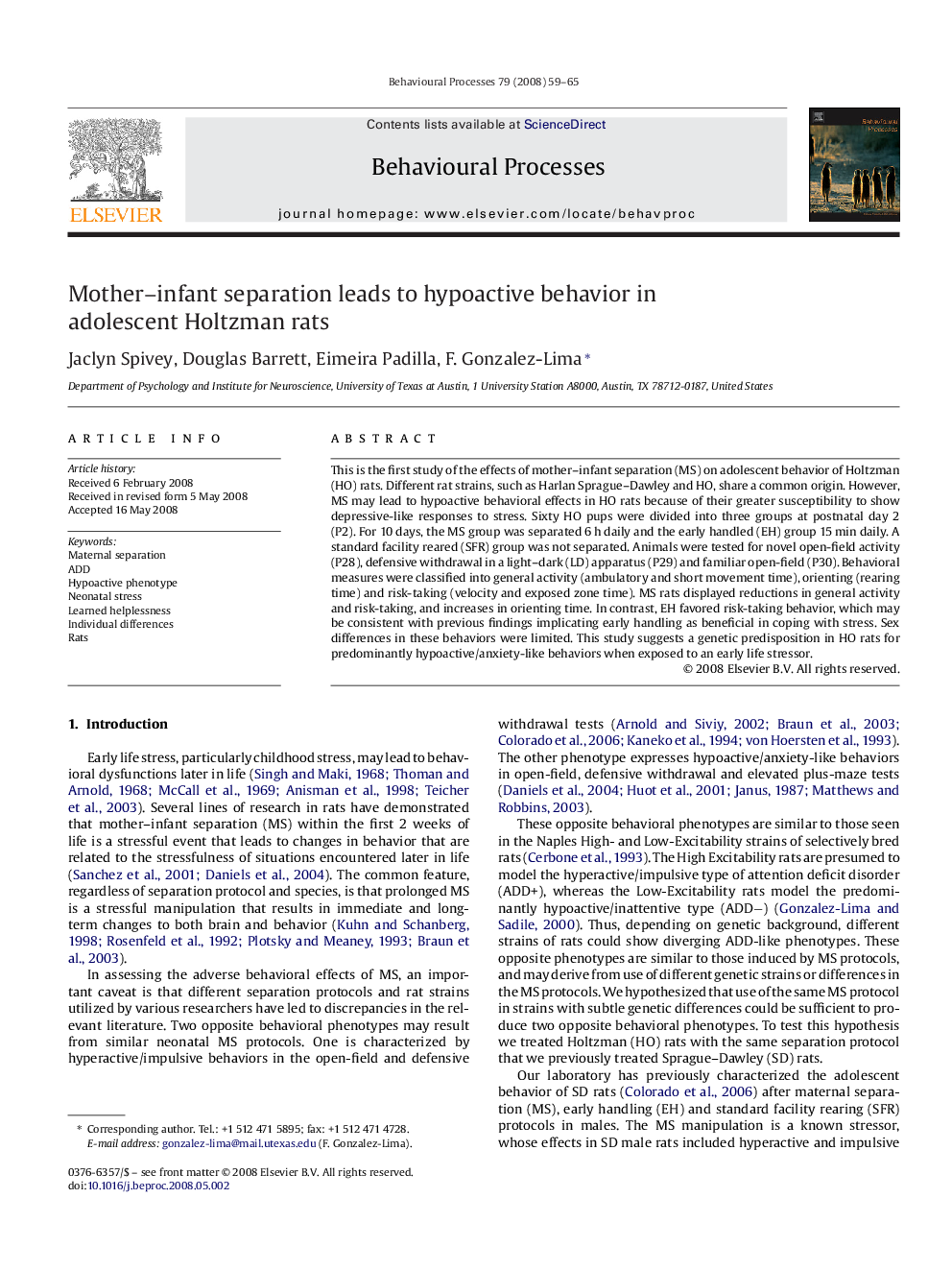| Article ID | Journal | Published Year | Pages | File Type |
|---|---|---|---|---|
| 2427741 | Behavioural Processes | 2008 | 7 Pages |
This is the first study of the effects of mother–infant separation (MS) on adolescent behavior of Holtzman (HO) rats. Different rat strains, such as Harlan Sprague–Dawley and HO, share a common origin. However, MS may lead to hypoactive behavioral effects in HO rats because of their greater susceptibility to show depressive-like responses to stress. Sixty HO pups were divided into three groups at postnatal day 2 (P2). For 10 days, the MS group was separated 6 h daily and the early handled (EH) group 15 min daily. A standard facility reared (SFR) group was not separated. Animals were tested for novel open-field activity (P28), defensive withdrawal in a light–dark (LD) apparatus (P29) and familiar open-field (P30). Behavioral measures were classified into general activity (ambulatory and short movement time), orienting (rearing time) and risk-taking (velocity and exposed zone time). MS rats displayed reductions in general activity and risk-taking, and increases in orienting time. In contrast, EH favored risk-taking behavior, which may be consistent with previous findings implicating early handling as beneficial in coping with stress. Sex differences in these behaviors were limited. This study suggests a genetic predisposition in HO rats for predominantly hypoactive/anxiety-like behaviors when exposed to an early life stressor.
